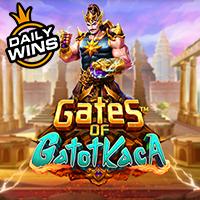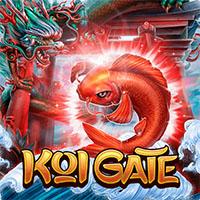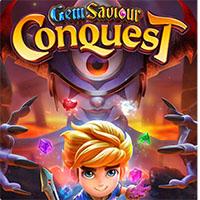

















Introduction: Building on the Foundation of Information Measures in Digital Games
In our previous exploration How Information Measures Shape Digital Games Like Fish Road, we examined how mathematical models of information influence game design and player experience. Extending this understanding, it is crucial to delve deeper into how dynamic information flow actively motivates players, sustains their interest, and fosters emotional and social connections. This article explores the nuanced ways in which information design is central to unlocking engagement, supported by empirical research and practical examples from successful digital games.
Table of Contents
- Understanding Player Motivation: The Intersection of Information Flow and Engagement
- Information Uncertainty and Risk Management: Building Engagement Through Controlled Ambiguity
- Cognitive Load and Information Processing: Designing Games for Optimal Engagement
- Emotional Engagement via Information Dynamics
- Social Information and Community Building in Digital Games
- Measuring and Optimizing Player Engagement Through Information Metrics
- Connecting Back: From Information Measures to Player Engagement — A Holistic Perspective
Understanding Player Motivation: The Intersection of Information Flow and Engagement
Player motivation is deeply intertwined with how information is presented and interpreted within a game environment. Players continuously interpret dynamic information cues—such as visual signals, narrative hints, or gameplay feedback—and respond accordingly. For example, in puzzle games like Fish Road, players assess the state of the fishing environment, adapt their strategies based on changing fish behaviors, and derive satisfaction from mastering these informational patterns. This ongoing interpretation fosters a sense of agency and competence, essential drivers of sustained engagement.
Research indicates that games which effectively communicate complex information through intuitive cues can significantly enhance motivation. For instance, the use of layered information—where immediate cues are complemented by background hints—encourages players to delve deeper, thus maintaining curiosity and interest over extended periods.
Case Study: The Role of Information Complexity in Popular Titles
| Game | Information Design Strategy | Player Response |
|---|---|---|
| Fish Road | Progressive information revealing, environmental cues | Increased curiosity and mastery |
| Clash of Clans | Layered strategic information, real-time updates | Competitive motivation, social engagement |
Information Uncertainty and Risk Management: Building Engagement Through Controlled Ambiguity
Uncertainty in information plays a vital role in enhancing suspense and player investment. When players face ambiguous situations—such as uncertain outcomes of a fishing catch or unpredictable enemy behaviors—they experience heightened emotional arousal, which can deepen engagement. For example, in fishing games like Fish Road, the unpredictability of fish bites creates a risk-reward cycle that motivates players to adapt their strategies, fostering a compelling sense of challenge.
Techniques for balancing information revelation and concealment include using fog-of-war mechanics, delayed feedback, or probabilistic outcomes. These methods preserve curiosity while preventing frustration, ensuring players remain invested without feeling overwhelmed or misled.
Impact of Signaling Risk and Reward
- Clear risk signaling—indicating potential loss or gain—guides player decision-making, such as choosing whether to pursue a risky catch.
- Reward anticipation—via visual or auditory cues—heightens emotional responses, reinforcing continued engagement.
Cognitive Load and Information Processing: Designing Games for Optimal Engagement
The amount and clarity of information directly influence cognitive load, impacting how players process and enjoy a game. Excessive or poorly presented information can lead to overload, causing frustration or disengagement. Conversely, overly sparse information may result in confusion and boredom.
To optimize information presentation, game designers can employ strategies such as:
- Progressive disclosure: revealing information gradually based on player progress or skill level.
- Contextual cues: providing relevant hints precisely when needed.
- Adaptive information delivery: dynamically adjusting the flow of information according to individual player performance, as seen in adaptive tutorials or difficulty settings.
Avoiding Overload with Personalization
Personalized experiences, leveraging data analytics, enable games to tailor information complexity, ensuring players are neither overwhelmed nor under-stimulated. For instance, adaptive hints in puzzle games help players of varying skill levels stay engaged without frustration.
Emotional Engagement via Information Dynamics
The pacing of information delivery can evoke strong emotional responses such as surprise, satisfaction, or tension. Sudden revelations—like unveiling a hidden feature or an unexpected in-game event—can create memorable moments that reinforce player attachment.
Narrative and environmental information also play crucial roles in immersing players. For example, in Fish Road, revealing new fishing locations or rare fish species through environmental cues sparks curiosity and emotional investment.
“The strategic pacing of information transforms gameplay from mere mechanics into an emotionally resonant experience.”
Using Surprises to Create Memorable Moments
- Implementing unexpected discoveries, such as rare catches or hidden features
- Designing environmental storytelling that reveals itself over time
- Creating narrative twists that challenge player assumptions
Social Information and Community Building in Digital Games
Shared information significantly influences social bonds and competitive dynamics. In multiplayer settings, real-time updates, chat features, and leaderboards facilitate community engagement. For example, in fishing communities within games, sharing catches and strategies fosters cooperation and rivalry, enriching the social fabric.
Leveraging information asymmetry—where some players have access to exclusive data—can promote cooperation or rivalry, depending on design goals. Such asymmetries motivate players to exchange information, forming social bonds or competitive tensions.
Fostering Community Through Dynamic Updates
Regular content updates, event announcements, and real-time leaderboards keep communities vibrant. The timely dissemination of information sustains interest and encourages ongoing participation.
Measuring and Optimizing Player Engagement Through Information Metrics
Quantifying how players engage with information flow requires innovative metrics beyond traditional playtime or scores. Examples include:
- Information flow rate: measuring how quickly players receive and process new data
- Curiosity index: tracking frequency and depth of exploration triggered by information gaps
- Engagement entropy: analyzing variability in player responses to different informational cues
Data analytics enable developers to identify bottlenecks or disengagement points, informing iterative design improvements. For example, analyzing drop-off points after certain information revelations can lead to refined pacing strategies.
Connecting Back: From Information Measures to Player Engagement — A Holistic Perspective
Integrating these principles reveals that effective game design hinges on a balanced, dynamic flow of information tailored to player psychology. As How Information Measures Shape Digital Games Like Fish Road illustrates, the interplay between information complexity, uncertainty, and emotional pacing creates a compelling cycle that sustains engagement.
Future advancements in information theory—such as adaptive algorithms that personalize information delivery—promise to further deepen this connection, unlocking new potentials for immersive and engaging digital experiences.
By harnessing the full spectrum of information dynamics, game designers can craft experiences that are not only entertaining but also emotionally resonant and socially enriching, ultimately transforming passive gameplay into active engagement.
